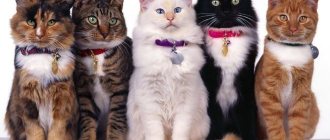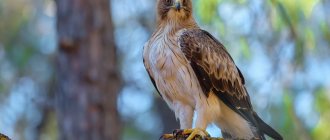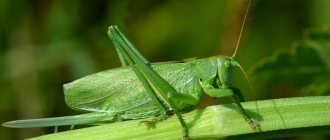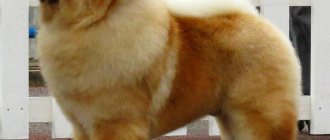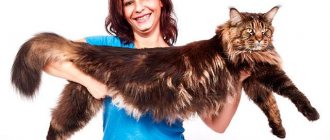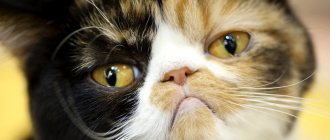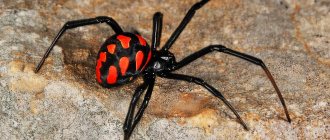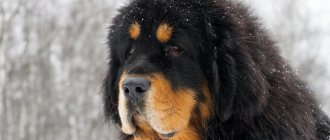Beautiful, intelligent and friendly, parrots are one of the most popular pets. Many people value them not only for their bright colors, but also for their high intellectual abilities. Different types of parrots have certain abilities. Some are more predisposed to copying sounds, while others are able to clearly reproduce human speech.
Among all the breeds of parrots, one species can be distinguished, which differs significantly from its feathered counterparts. This type of domestic parrot is capable of not only copying human speech and imitating intonation, but is also capable of conducting a meaningful dialogue and distinguishing colors and objects. Who claims to be the smartest parrot in the world and which species of parrots have the most developed mental abilities, we will consider in the article.
The smartest parrot in the world
At the University of Arizona, Irene Pepperberg studied the abilities of parrots. As a result of research, the African gray parrot distinguished itself due to its high mental abilities. He learned more than 80 words, as a result of which he could correctly answer various questions, accurately determine the shape of objects, the number of objects and distinguish colors. He was also able to express his wishes, for example, asking not to be left alone in the room or asking to be carried back.
A gray parrot named Alex lived for 31 years and was listed in the Guinness Book of Records as the smartest parrot in the world.
Among all types of parrots, the Gray is considered the most intelligent. Also considered smart breeds are cockatoos, Amazons, macaws, corellas, monks, keas, budgies, rosellas, and lories.
Each species of parrot is predisposed to certain abilities. Some parrots quickly remember words and pronounce them clearly, others sing well, imitate sounds, or perform tricks well. A parrot's skills and abilities depend not only on the specific species, but also on various other factors such as gender, age and individual capabilities.
Cockatoo
This bird is recognized not only as one of the smartest parrots in the world, but also the most fun. She has a great sense of rhythm and loves to dance, she is distinguished by her artistry, which is why she is popular when people choose a pet.
In terms of intellectual abilities, cockatoos are close to the Amazons. They also quickly become attached to a person and miss him. This may manifest itself in the fact that if there is no attention, the bird will begin to constantly scream. But those people who pay enough attention to the cockatoo and communicate with it for a long time can thoroughly enjoy their tenderness.
Birds need to be trained daily, 2 times a day for about 10 minutes. On weekends, training can be extended to 30 minutes. The main thing is daily work.
Interesting! It is believed that birds remember the speech of women and children more easily because their voices are lower.
Smart gray parrot
The second name for the gray parrot is the African gray parrot. Grays have a rather dull gray color; only the tail feathers stand out with bright color. The gray parrot is often kept as a pet. They attract attention with their outstanding mental abilities.
In terms of intelligence, Grays can be compared with a 5-year-old child, and in terms of emotional state with a 3-year-old. They are able to copy intonation and reproduce human speech. Unlike other species of parrots, grays are capable of conducting a meaningful dialogue with humans.
By nature, Grays are very stubborn and touchy. These are very demanding parrots in terms of care and living conditions.
Kea
This is a special species of New Zealand parrots because it is not a domestic parrot. This bird, living in nature, is considered not just curious, but even impudent. What did she do to deserve such an opinion of herself? She is very interested in the contents of garbage cans, houses, apartments, cars, and besides, she causes significant harm to the agriculture of the local population of New Zealand. For this reason, they were shot for a long period until their numbers were reduced to catastrophic numbers. In 1970, they were banned from shooting and included in the Red Book.
These individuals live at an altitude of 1,500 m and perform incredible tricks there, showing their intelligence and intelligence, which is why most tourists love kea.
Smart parrot Amazon
The Amazon parrot also has good mental abilities. He is able to learn about 80 words, imitates human speech, copies intonation, and can also imitate various sounds. He is able to pronounce not only words, but can also produce entire sentences.
Amazons are also quite artistic. They funny parody other pets, remember melodies, can sing, and perform various tricks.
Amazons are easy to tame and are very sociable birds. They remember and easily recognize the owner among all family members. Amazons are friendly birds and easily learn new things.
Lorikeet
These birds are distinguished by their unique coloring. Their feathers are very bright and attractive. They differ from other parrots in their language. In nature, such parrots are accustomed to eating only soft food; they literally scoop out food with their tongue, which resembles a brush. That is why these birds do not require a large and powerful beak; it is very soft and brittle. This bird is one of those species of parrots that do not need to be tamed. This bird itself begins to make friends with both people and steel birds. If we talk about the abilities of these parrots, they can easily speak even in sentences, or simply in separate words.
In addition, these birds easily bring various objects to their owner, in this they are very much reminiscent of dogs. However, these individuals also have their drawbacks. For example, these parrots have a very specific voice. Not every owner can withstand the very loud and harsh speech of these birds. Also, these parrots are accustomed to eating only liquid and very soft food, they have a wonderful metabolism, which is why their stool is very liquid. For many people this poses a huge problem. However, if this does not scare you, then you can have such a bird at home, you will have a very friendly parrot.
Smart macaw parrot
Among the macaw parrots, there are the largest and most expensive varieties. They are able to remember about 20 words. The macaw has a well-developed intellect. Just like gray parrots, macaws pronounce words quite meaningfully.
Macaws are very artistic parrots. They imitate pets and imitate the sounds they hear. The macaw can also be taught to perform various tricks and play games.
But smart macaws have a complex character. They are touchy and jealous. If a parrot is offended or in a bad mood, it can become aggressive and even bite.
The macaw's voice is sharp and shrill. These are noisy and loud parrots.
Budgerigars
This is where many breeders begin to argue about whether the wavy can be considered an intelligent creature. But experience shows that budgies are smart birds and are able to remember both words and entire quatrains. True, for this you will have to spend more time with your pet, and the bird itself should be young and lonely, then the wavy’s chances of speaking will increase. This is due to the fact that the bird becomes attached to a person and tries to imitate him.
Due to their ability to learn, as well as ease of care and maintenance, some people prefer wavy cats.
How to teach a parrot to talk
Simulation of sounds
Imitation of sounds is a natural need and skill of all parrots. This is how they communicate with each other, compose songs to attract females, and sometimes just have fun.
The smartest and most talkative parrots
However, the accuracy of reproduction of what is heard varies greatly between species. Large breeds of birds are considered the most talented, capable of repeating entire phrases or quatrains. But almost all members of the squad can whistle the melody they like.
Class time
You need to teach your pet to talk only after establishing a trusting relationship with him. When the bird sits calmly on your finger, is not afraid, follows basic commands and wants to communicate more with its beloved owner, then classes can begin.
The latter should be regular, twice a day. It is better to carry them out at the same time, namely in the morning before feeding and in the evening. It is important that the pet is not distracted by anything, there are no extraneous noises or new objects in the room.
Parrots from the Guinness Book of Records.
The duration of the lesson is recommended so that the student does not have time to get tired. To begin with, lasting about 15-20 minutes, gradually increasing to an hour. The bird should enjoy the activity and not be a pain for it. You cannot scold your pet for failures; as reinforcement, show affection, praise, and treat him with his favorite treat.
Situational approach
In order for the bird not just to repeat words, but to reproduce them in a contextual situation, you need to communicate with your pet at every opportunity. Explain all your actions, being nearby, cleaning the cage, comment on what is happening. Call your feathered friend and other family members by name often.
First words
Birds repeat vowels and sibilant consonants better. Therefore, it is worth starting learning with words containing a large number of them. It's good if it's your pet's name.
Alex is the smartest parrot on the planet Talking parrot
Learn a few words right away. It is possible that the bird simply does not like something, and it will ignore it. It is advisable that the phrases being learned have an emotional connotation, so it is easier to assimilate them. We also recommend having a special dictionary to record your learning goals and successes.
Clear pronunciation of words
The accuracy of reproduction depends on the species. Grays are considered virtuosos in terms of clarity of pronunciation and even imitation of a person’s voice. Birds of small breeds pronounce words unintelligibly.
At the beginning of training, a parrot's babbling is a good sign. This means that your pet will start talking very soon.
Brief description of the breed
Budgerigars are native to Australia. A breed of natural selection. Moreover, these small birds are the most capable house talkers.
Body shape. An elegant conical silhouette with a base at the back of the head, tapering to the tip of the tail, where the apex is, with a slight arching of the back line and a sharper arch of the chest. Length. The ideal length of a bird is from 210 mm from the head of the individual to the tip of the tail.
Wings. The wing length standard is 45% of the ideal length of the individual and is measured from the protrusion of the wing bone on the back to the tip of the longest primary flight feather. The wing should contain seven visually fully grown, non-overlapping primary flight feathers lying at the base of the bird's tail. Head. Round or oval, wide with clear lines. The contour of the skull comes from the cere, which is located above the beak, is directed in an arc upward, forming a regular circle on the top of the head and merges with the line of the back in an elegant arc.
Beak. The base of the beak is set deep in the feathers of the front part. Must be hard and sharp, without bends or cracks at the end. Eyes. Black expressive eyes are located at a great distance relative to the front and top of the head, widely spaced, allowing the budgie to always be “on the alert.” Shoulders. Wide when viewed from the back. Normally functioning shoulders should be defined by bone and muscle on the body of a healthy bird.
Tail. It should be straight, fitting tightly to the two main tail feathers, forming a sharp arrow. The ideal length should be about 30 - 35% of the total length of the wavy, counting from the tip of the wings to the tip of the tail.
Landing. The budgie should sit on the perch or ring steadily, without agitation or sleepiness, naturally. The landing angle should be 20° - 30° between the vertical line and the line passing through the eye-tip of the tail points. It is better if the parrot covers the perch with both paws.
Throat marks, cheek spots and mask. The mask surrounding the eyes and starting from the cere should be of a clear, deep and broad color, usually yellow or white, and, where required by the standard, decorated with symmetrically arranged six round throat marks. They are usually grey. The two outermost throat marks are partially overlapped by supracheek spots. The size of the throat marks should be proportional to the bird's mask.
Legs and fingers. The legs of budgerigars should be straight and strong. The bird has two front toes and two back toes, which should tightly grip the perch or ring. The claws should not be overgrown.
Markings. Any markings and spots on the cheeks, neck, back of the head and wings must be in accordance with WBO standards.
Color . The color must also be in accordance with WBO standards. Standard of ideal qualities for a female budgerigar The structural features of the female's body coincide with the standards of ideal qualities for a male almost completely, with the exception of the characteristics of the head. The female budgerigar's head is as large as the male's head when viewed from the front, but it has a smaller anterior rise than the male's head. In this case, the enveloping contour of the head should be just as neatly rounded, connecting the cere point by point through the crown and back of the head, and adjacent to the line of the back when viewed from the side.
First walks after adaptation
Experienced breeders do not recommend starting to tame a budgie in the first days. Moreover, while the bird is wild and afraid of your hands, it is dangerous to let it out of the cage. The first flights into the room can be made only after 2-3 weeks, when the parrot has already become comfortable at home and knows the situation.
It is quite possible that the first time the wavy will not be able to enter the cage on its own. The reason for this may be that it cannot find the entrance. However, do not rush to catch the bird with your hands - this may violate the fragile trust that you have built up in the first few weeks. After a few hours, the wavy will get hungry and this will motivate him to go to his native land.
If you doubt that your parrot will easily return to its cage, then listen to our tips on how to teach your budgie this simple skill.
let your parrot fly in the afternoon, when he is less active; some time before you release him, remove the feeder, let him become more hungry and start looking for food more actively; do not feed your budgie while walking, let it get used to eating only in the cage; if a wavy is looking for food and can’t find it, you can help it like this: place a saucer with food on the bottom of the cage and sprinkle a little food right on top of the cage to draw its attention to it; make a perch near the entrance to make it easier for the wavy to find its way; stay away from the cage if you see that the parrot is still afraid of you; If your pet never entered the cage, you need to wait until it gets dark and catch the wavy. This needs to be done together - one person turns off the light, the second catches the bird, puts it in a cage, and only then turns on the light. do not move the cage until the parrot gets used to its place.. Following our simple tips, your pet will easily get used to its new home
We wish your feathered friends a speedy adaptation
By following our simple tips, it will be easy for your pet to get used to its new home. We wish your feathered friends a speedy adaptation.
Monk
The monk parrot (also known as Quaker or Kalita) is a very hardy bird that is resistant to temperature changes. Parrots have adapted perfectly to urban conditions and now they can be called something like a pigeon for South America and even North America.
And they called the parrot a monk because of its plumage on its head. It is gray in color and really resembles a monk's cap.
The Quaker's favorite delicacy is apples. And in some countries, kalita is considered a real pest.
Thanks to their temperature endurance, Quakers take root well in the southern regions of our country. There they are even kept outside in enclosures, allowing the parrots to live as if in their natural environment.
At home, the Quaker is an excellent companion who can be taught a wide range of words. In addition, the bird loves to imitate sounds. Therefore, if you often begin to hear familiar sounds, do not doubt that it is the wicket that is performing its tricks.
The monk is a fairly smart parrot. It can distinguish family members by name and speak directly to the selected person. However, they can be quite fierce in protecting their property. And if you have other breeds of parrots, it is better to keep them separately.
Quakers have a rather unpleasant voice. It's shrill, which some people don't like very much. But if the parrot’s screams do not cause you any inconvenience, feel free to get this bird! And training him to talk will help you minimize the natural bird conversations of the kalit.
Video: monk parrot
Nutrition
Flocks of wild budgies constantly migrate from place to place in search of food. They are especially attracted to grassy plains, bushes and eucalyptus trees, where they can find an abundance of edible seeds.
The basis of the diet of a domestic budgie should also be various grains and seeds. You can buy a grain mixture for budgies at a pet store or make the mash yourself. The grain mixture must contain millet (preferably several types), oats, sunflower and meadow grass seeds, flaxseed and canary seed.
It is useful to give parrots porridge made from buckwheat, rice, rye or wheat, cooked without salt. Berries, corn, vegetables (zucchini, carrots, pumpkin), fruits (apples, bananas, grapes), sprouted grains of oats or wheat, young grass and flowers - woodlice, dandelion, clover are suitable as top dressing.
From time to time you can treat your parrots with treats in the form of honey grain sticks, Senegalese millet in ears, rolled peas, sesame seeds, and Abyssinian nougat. It is useful to give chicks and parents of chicks an additional boiled egg during the nesting period.
No food from the table is suitable as bird feed . Fried, salted, sugar-containing and peppered foods can cause severe poisoning in birds.
Lovebird
This parrot was given this name because it is very faithful to its partner. If you listen to the legends, you can find out that birds in the wild meet one partner and maintain their union for life. If one of the birds dies, the second one will also die over time. However, the situation is not like that.
If you want your parrot to talk to you, then you only need to get one bird. In addition, it is advisable that this parrot be born in captivity, this way it will more easily get used to life without allies. The natural needs of this parrot cannot be avoided; in order to drown out the need for communication, the parrot will talk to you.
If you want to start a family of such parrots, then first you need to get a male and make friends with him. Only then should you purchase a female parrot and introduce them. Parrots have a matriarchy; if you place a male with a female, she can kill him. If the female has an unfamiliar environment, she will calm down her ardor a little and adapt more easily.
These parrots have a very unusual character. They will not shout for no reason, however, if they speak, they will be heard even on the next street. In addition, these parrots love to taste everything that is easy for them to reach. Of course, lovebirds get along well together, but if they come across another animal or bird, they can be aggressive and unfriendly. Lovebirds are very special birds. They are very smart, and if they are trying to get into something, then there is definitely a reason for this. If your parrot constantly strives for one of the parts of the apartment, then he is definitely attracted to something there. Such a parrot should not be left alone with valuables.
Rosella
This parrot can be called one of the quietest. These parrots do not scream like others, however, they sing very beautifully. These parrots are very bright, it seems that absolutely all colors are combined in the color of these parrots. This bird gets along well with the person with whom it lives. She makes contact, she is very calm. The parrot is not friends with other birds. He can kill small birds, but in a situation with large ones, Rosella becomes very jealous.
This bird sings much better than it talks. Sometimes a bird can be taught some words, but this is in rare cases. This is not a fussy bird, it does not try to climb anywhere, it only gnaws on what its owner gives it, it is not prone to hysterics. This is an excellent parrot to keep at home.
